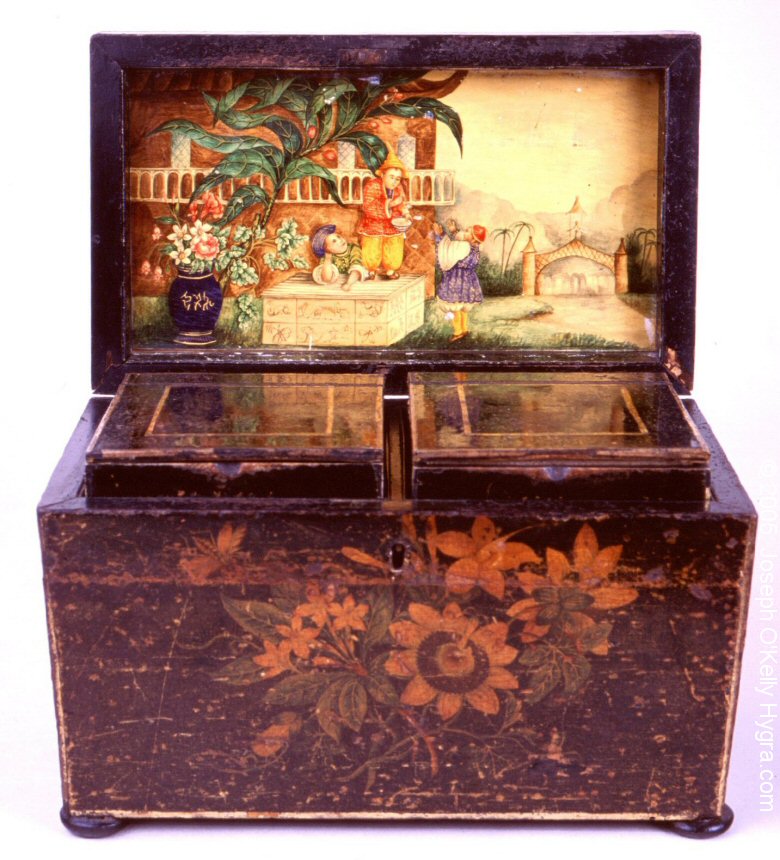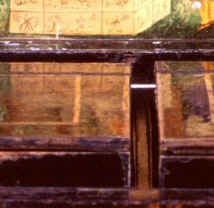
The particular group of boxes
under discussion here, do not have overtly Scottish motifs, although
there are sometimes thistles or acorns painted on them. One design which
is typically Scottish, is the fine linear wavy pattern on the canisters
inside a tea chest which features chinoiserie and floral decoration.
This particular tea chest shares many characteristics which are shared
with other boxes in this group and the pattern on the canisters
provides another link to Scottish work.

Tea canisters with wavy
line decoration.
|
The most delightfully fanciful
vision of Cathay in a tea chest. The interior of the lid is painted with
three oriental child clowns, standing on a platform made up of what
looks like tea chests. Their costumes are more in the Turkish-Moorish
fashion, except the hat of the central figure which is in typical
chinoiserie of the inverted flowers variety favored by Pillement. It was
a fad amongst European aristocracy to dress their own children in
"Turkish" costumes. Unusually the building behind them is
drawn in perspective, although the bridge in the distance is more in the
tradition of chinoiserie. The enormous flower pot and the gigantic plant
which looks as if it is the continuation of a metamorphic spout are
influenced by French mid 18th century tradition. Pillement liked to
dwarf his figures by shading them in enormous two dimensional plant
life, although these youngsters are too solid looking for Pillement. The
composition is most unusual in that it combines quite earthly looking
elements with total fantasy. The painting is of exceptional quality, the
vivid colors of the clothes and plants contrasting with the delicately
shaded faces. A rare whimsical vision perfectly composed, placed and
executed. 9" wide. Circa 1810.
The above is an extract from
page 29 of Antique
Boxes, Tea Caddies, and Society, 1700--1880
Antigone Clarke & Joseph O'Kelly, ISBN: 0764316885 |
